Spinning Trash into Tunes: Trashcan Banjos, Washtub Basses, Shovel Guitars
While making your own instruments is nothing new and recycling is a linchpin of Portland’s cultural identity, the two ideas have meshed most harmoniously in our local music scene. Three local musicians share their love for playing on instruments made from items more likely to be found at hardware stores or in junk heaps than at music stores—pieces created and engineered specifically to fit an artistic vision.
These instruments steal so much of the the spotlight that the musicians who play them have taken stage monikers to match their instruments.
JAMES COOK (TRASHCAN JOE, mud porch)
Instruments: Trashcan bass upright, tomato cantar, cigar box ukelele, and the trashcanjo
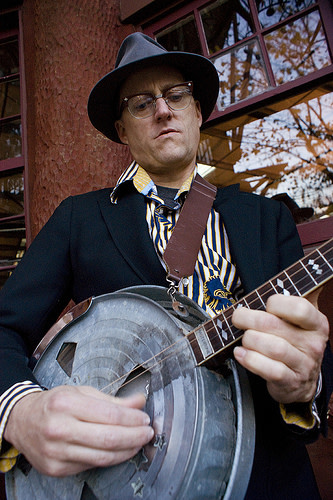
Image courtesy of Trashcan Joe
James Cook is the frontman of Trashcan Joe, an acoustic band that fuses old-time with jazz and bluegrass—jugband jazz, as they’re often referred to. He is also the creator of many handmade instrumental oddities, including his band’s namesake: the trashcan banjo, or trashcanjo.
The Trashcanjo
Cook dreamt up the idea and decided to give it a try on a whim, thinking it would just be something funny to make. Instead, it’s become the instrument he plays the most, not only because of its sound and recognizability as his band’s namesake, but because it’s also the most portable by bike. If he can get to a gig by bicycle, he will, pulling any equipment in a trailer.
Trashcan Bass
The trashcan bass was Cook’s first attempt at making his own instruments. After touring internationally with a regular upright bass and incurring the hefty repair costs that come with classical instruments, Cook started brainstorming other possibilities. He was inspired by Depression-era African American musicians who made instruments out of things like broomsticks and strings. He looked into washtub-style basses, like Lucas Warford’s style bass (see below), but decided to go in a slightly different direction. With a standard metal trashcan, a top-of-the-line D-string, and quality wood for the neck (which have a few markers denoting where the notes are), a trashcan bass is only a fraction of the price, and is much more durable than a classic upright. To play, you simply move up and down the string rather than side-to-side.
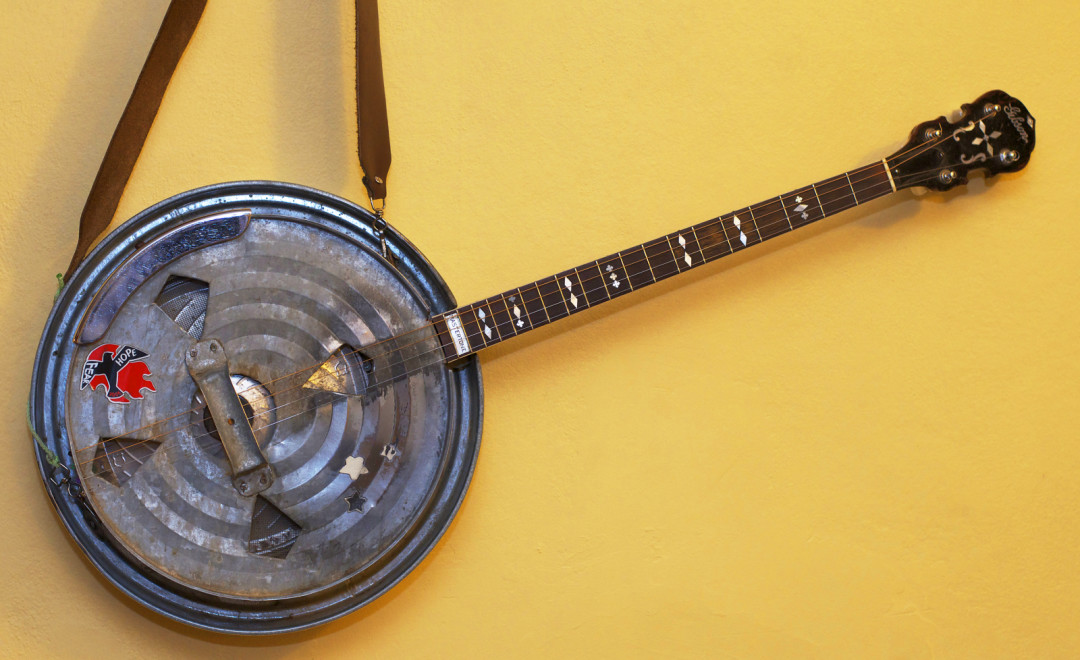
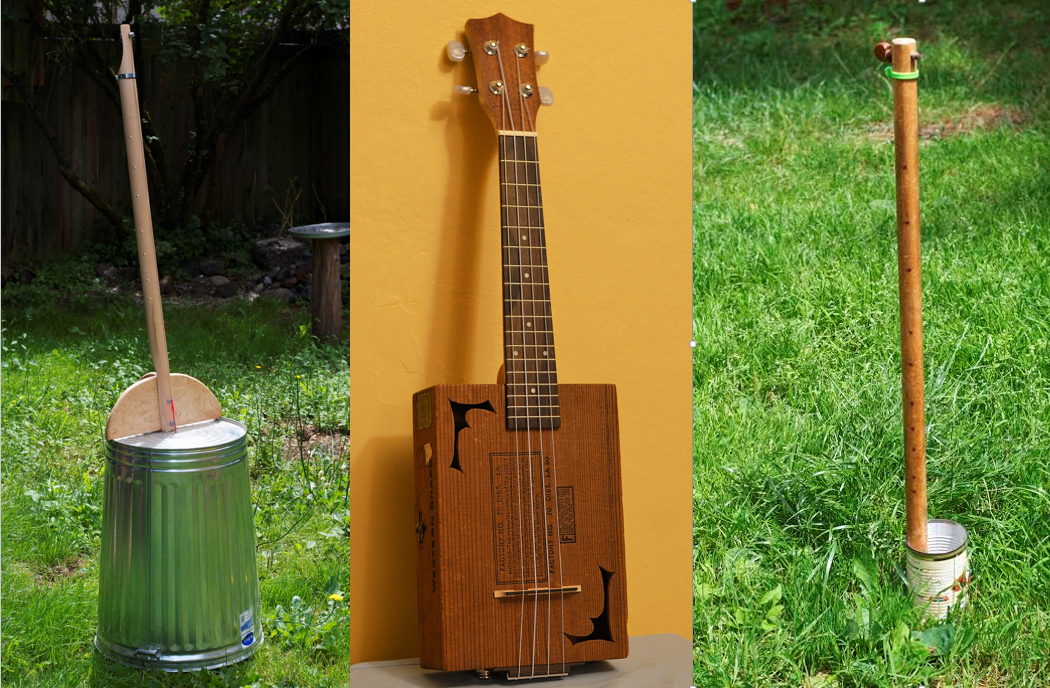
(Top) Trashcanjo. (From left to right) Trashcan bass, Cigar Box Ukelele, Tomato Cantar
Image: James Cook
Tomato Can-tar and Cigar Box Ukulele
Cook has managed to make what sounds exactly like a sitar out of a tomato can. He said it’s the same idea as the trashcan bass, made with a single musical string but attached to a Muir Glen tomato sauce can. The wrapper might be tattered and peeling off, but the sound transports you to an ashram. Meanwhile, the cigar box ukelele is a more recent creation he’s been integrating into a new side project called Mud Porch.
UPCOMING SHOWS
Mud Porch: July 11, 12, 13. Oregon Country Fair in Veneta, OR
Trashcan Joe: Check website for upcoming dates.
SHOVELMAN
Instruments: Electric shovel-guitar
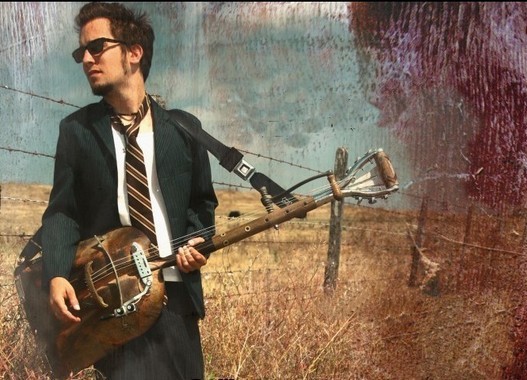
It would seem that Isaac Frankle was destined to become Shovelman. Hailing originally from Northern California, he grew up in a house built from ship and tractor parts cobbled together by his parents. They lived completely off the grid until he convinced them at age 12, in the name of rock n’roll, to plug in. He’s been playing the electric guitar ever since, and for the past six years, that electric guitar has been made from a shovel.
Anatomy of the Shovel Guitar
- Tuning pegs drilled into the top
- Meat grinder handle with notches carved for the strings
- Bent antique typewriter part that holds the strings together toward the bottom
- 1950’s Korean pickup Frankle found lying around a friend’s junk drawer
- Antique drawer handle
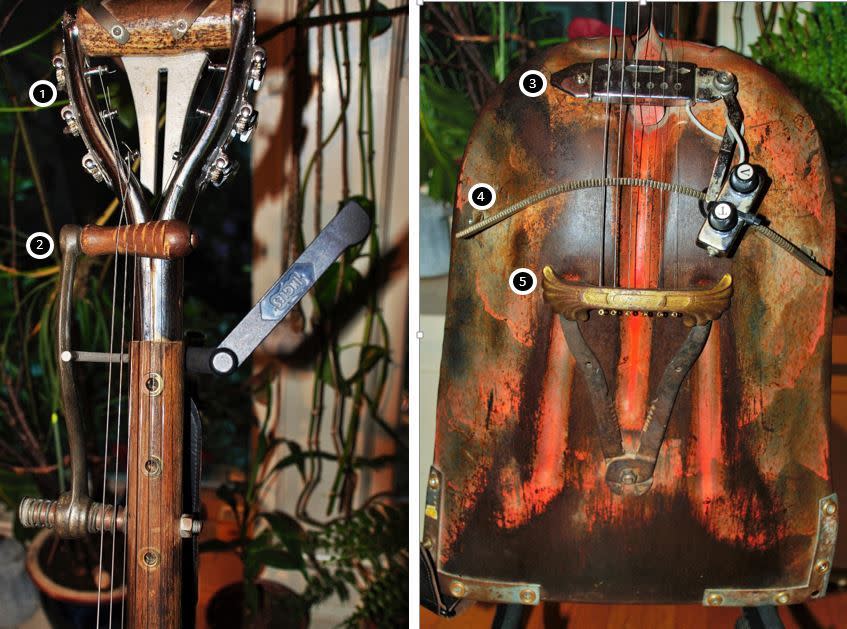
Image: Danielle Klenak
Frankle first spotted the shovel out back at a hardware store. A beat up thing, it wasn't used by the employees and wasn't for sale. He was enamored by its build and talked the shop into selling it. As far as can be determined, it’s an old grain scoop. He added a very slight patina to the shovel head. Due to its unique shape, the shovel guitar fits perfectly inside a cello case, which Frankle says spawns some awkward conversations about his “cello playing.” Also, because the shovel guitar is truly a work of art and one of a kind, Frankle buys an extra plane ticket for it whenever he travels.
The shovel guitar comes with its own limitations. For starters, it has no fret board, which means he can’t play chords like a traditional electric guitar. Instead, he uses a slide—a metal piece that goes over a finger and is moved up and down the strings to create tones. On top of that, Frankle is a solo artist, so he utilizes a sound looping system. He starts by hitting the shovel to make a percussive beat, followed by a bass line, and he then plays and sings over these layers to create hypnotic, electro-blues melodies.
UPCOMING SHOWS
Shovelman: July 11, 12, 13. Oregon Country Fair in Veneta, OR
LUCAS WARFORD (Three for Silver)
Instruments: Washtub upright bass, bass banjo
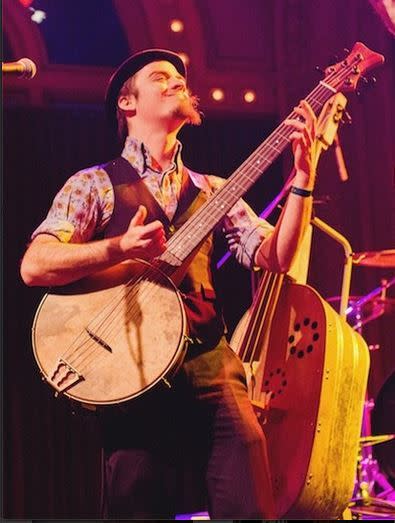
Image courtesy of Three for Silver
Lucas Warford is the bassist for Three for Silver, a trio that recently opened for the Von Trapps and leans toward what they call "progressive folk”—accordion, violin, and Warford's basses playing a blend of experimental jazz, gypsy, and Americana. He not only plays an upright made out of a metal washtub, but also an even rarer instrument, the bass banjo.
Washtub Upright Bass
This instrument, which steals the spotlight as soon as it’s brought onstage, was the brainchild of Warford and pal Tom Finollosa. Finollosa made a prototype several years ago, and when Warford saw him playing it onstage, decided he wanted one. Together, they modified Finollosa’s original design to suit Warford’s playing style. A percussive player by nature, he utilizes the “slap” style wherein he picks up the strings by his fingers and slaps them back against the neck.With the washtub itself, he can also make some additional beats by tapping against it.
A piece of banister serves as the leg. The “daisy holes” serve no purpose other than decoration and Warford's desire to use a circular drill.
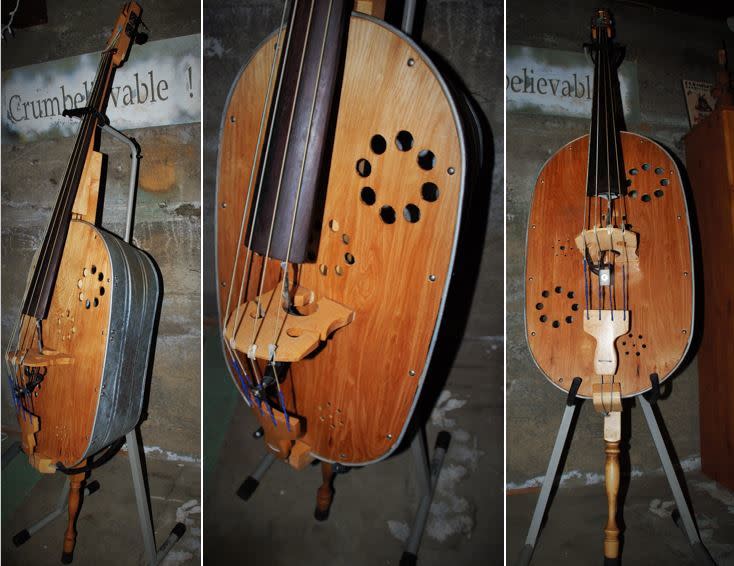
Image: Danielle Klenak
Bass Banjo
This instrument, much like Shovelman’s guitar, is a work of art. Warford had bought a commercial bass banjo years ago, but the craftsmanship and sound were not up to par. However, while performing with it, he was spotted by local craftsman Ed Davey, who was familiar with building electric basses but had always wanted to make a bass banjo.
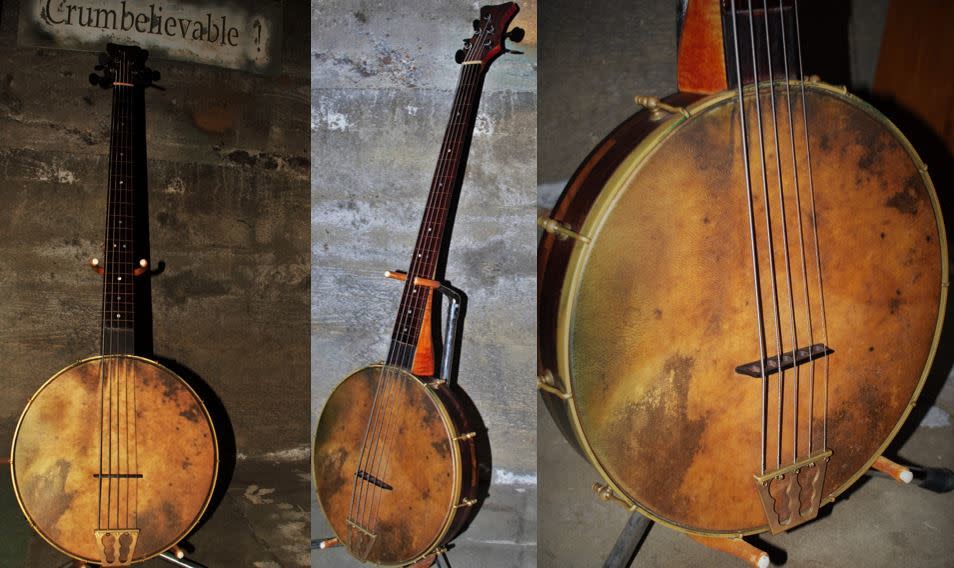
Image: Danielle Klenak
Warford wanted a bass banjo that was tuned as a bass, which requires a neck that is as long as possible. The neck, in fact, is almost as long as the upright, and it requires custom strings made especially for it.Warford says he likes playing the bass banjo the most. However, given Warford's aggressive playing style, the strings regularly eat through the wood. Luckily, Davey is around to nurse it back to health for the next onslaught.
UPCOMING SHOWS
Three for Silver: July 11, Mississippi Pizza
